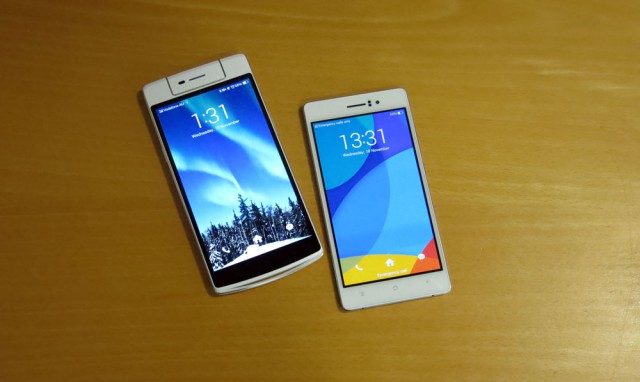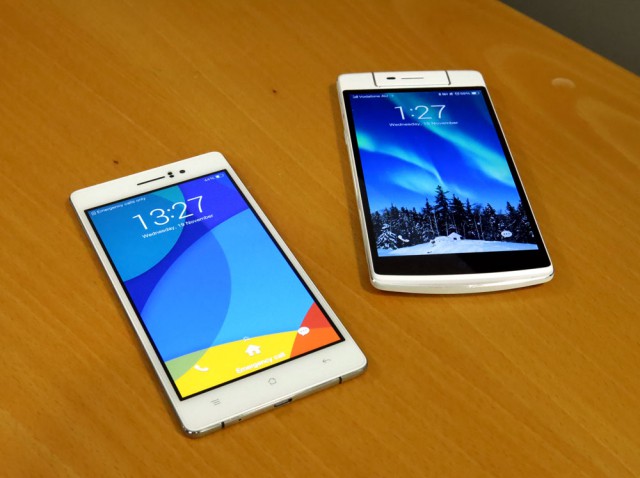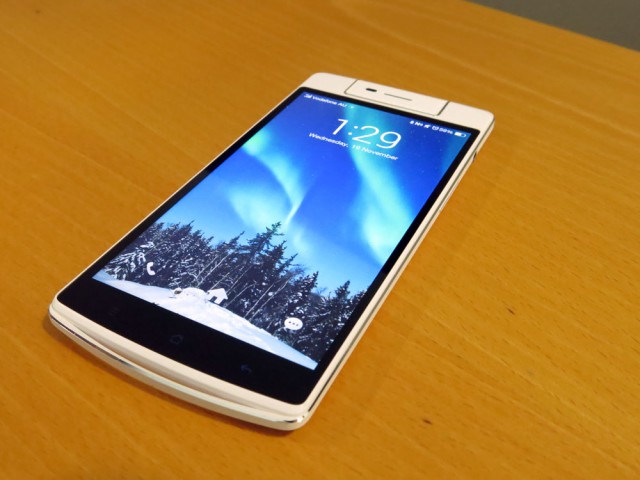Oppo has been making a name for themselves in the local market in the last few months with its Australian launch in September. With the Find 7, N1 Mini and Neo 5 on sale to Australian customers, and the recent launch of the N3 and R5 making waves, I sat down for a chat with Michael Tran, Oppo’s Australian Head of Marketing, and spent some time with the company’s new models.
The mainstream media’s newfound interest in the company isn’t a surprise to us at Ausdroid – we’ve been looking at their phones on import for a while now, dating back to 2012’s Find 5, and if there’s one company we have in mind when we tell people to watch out that’s on the cusp of “breaking out”, it’s probably Oppo. The company has attracted and held attention by consistently producing quality hardware – and pushing a few boundaries here and there.
During my chat with Michael it became surprising the number of “worlds somethingiest something” claims Oppo can justifiably attach to its phones. Worlds first 1080p screen in a smartphone – Find 5 (and now we take this for granted). World’s first rotating camera – N1. World’s first motorised rotating camera – the forthcoming N3. World’s thinnnest phone – the again-forthcoming R5. That’s just recent history.
As Oppo has moved into Australia, they’ve been selling their phones and accessories exclusively online through their site, oppomobile.com.au. We’re hoping that the N3 and R5 will pop up at Australian retailers or even on contract (or pre-paid) at carriers – quality products deserve a chance to find an audience at retail, rather than exclusively selling online. There’s a hint that this might happen, but it’s obviously early days yet (the phones won’t be released until the new year) so we can’t talk specifics. Michael tells me that the company is also looking to expand its range of accessories available online to sell products such as its VOCC rapid charger separately, but needs to go through the proper approval process to ensure the products meet Australian standards (for now, if you want a VOCC charger, you’ll have to settle for the one in the box with your phone).
Sitting on the table in front of me are a number of Oppo’s phones from recent years. At first glance the Find 7 and N1 are instantly recognisable, but at the front of the pack are a couple of devices I don’t recognise immediately – the newest models N3 and R5 are sitting in front of me, ready to be picked up and played with.
N3
Michael demonstrated the N3’s party piece first – where the N1’s camera required the user to manually rotate it, the N3 includes a motor to do the rotation for you. When operating the camera software, a gesture on the screen switches between “front” and “rear” camera – causing the camera to rotate – and the effect is amusingly hypnotic.
Otherwise, as the name implies, the N3 seeks to evolve on its older sibling and make improvements across the board in terms of specs and capabilities. The large area at the top of the phone – necessitated by the rotating camera – remains, while Oppo has worked hard to reduce the bezels around the other edges.
Notably, the N3 still has physical capacitive buttons. I asked Michael whether Oppo’s felt any pressure to do away with the physical buttons in favour of on-screen ones and his answer is pretty simple – “No”. Oppo’s customers like the capacitive buttons, and Oppo doesn’t see a need to change this.
The N3 also adds a fingerprint sensor to the rear of the device. As you’d expect, it can unlock the phone and be used in most of the expected scenarios in which you’d expect to find fingerprint security on a phone, but it can also be used to protect “sensitive” pictures, which will only be displayed when the user’s fingerprint is supplied.
R5
The looming release of the R5 will be the first time we’ve seen an R-series phone offered (officially, without importing) for Australian customers.
While the N3 is an evolutionary step over its forebear, the R5 is a shot across the bow of the industry. Oppo’s delivered a phone that is – for now, at least – the world’s thinnest smartphone (there’s the world’s X-iest X) at just 4.5mm thick. It’s a little thicker than its Micro USB charging port, and you can see for yourself how it compares to 50 cent piece.
Despite the thin profile, the phone has a solid feel to it, with the metallic finish providing a sturdy structure to the phone and a cool-to-the-touch feeling. The screen is also notably bright and retains its colour accuracy despite the low angles of the shots I took to show the phone’s thin profile.
As with the N3, there’s a set of capacitive buttons on the front of the device, while internally there’s a Snapdragon 615 processor (64-bit, 8 cores), 2GB RAM and 16GB storage. There’s a 13MP Sony Exmor camera sensor on the back, and a 5MP front camera with a wide field of view for a better video calling experience.
The notable omission from the R5 is the 3.5mm headphone jack. Oppo says they just couldn’t make the headphone jack work with inside device’s 4.5mm thickness. This shouldn’t be too much of a problem if you’ve jumped on board the Bluetooth bandwagon, but might encourage you to do so if you haven’t already.
As we looked at the phones, the conversation turned to Android customisations, or “skins” as they’re often referred to. Oppo’s Color OS has evolved in front of our eyes over the last couple of years and there’s now a sense of maturity to it, with a calm confidence in its design and a number of pleasant animated flairs in the OS.
Michael stumped me with a question of what I consider a “good” customisation as opposed to a “bad” one. My answer at the time was that I didn’t like to see changes and customisations for the sake of it carried out over stock Android, but on reflection I feel I should qualify that: that if a manufacturer can bring a tangible, definitive benefit to their users without compromising their ability to update the core OS then they should definitely try to do so.
With the spectre of software updates raised, Michael also told me that while providing updates is not something Oppo has traditionally done, they are looking at this for the future but it’s early days yet. It’d be good to see a clearly defined path for software updates from the manufacturer – something along the lines of HTC’s Advantage program, at least in the way it guarantees software updates for some devices. We’ll be checking in with Oppo for more details on these plans in the coming months.
Oppo’s looking to release the N3 and R5 to the Australian market in the new year, though pricing is still unknown for both phones. We’d like to thank them for the chance to check out the phones in person, and we’re looking forward to giving them the proper review treatment in the new year.
What parts of Oppo’s new phones appeal to you the most? Will you jump onto the N3 or R5? Tell us in the comments!













Where i can to by r5 in melbourne
Capacitive buttons on Android devices…
Kill !
Crush !!
DESTROY !!!
NO SALE NO SALE NO SALE!
Not pure Android, not on your list, no sale!
Snapdragon 815 processor……Geesh! What’s the price and release date?
Well, that’s a bit awkward. That should have read “Snapdragon 615”. Apologies!